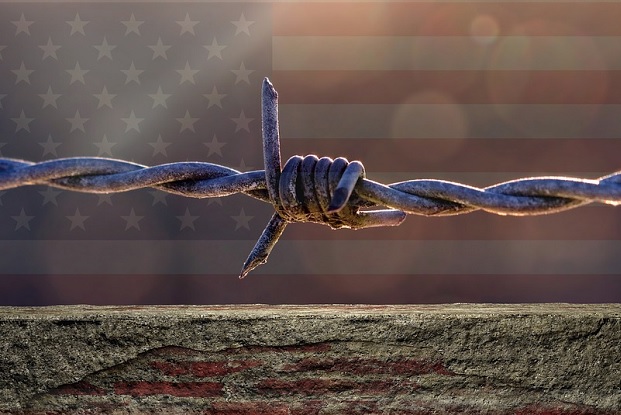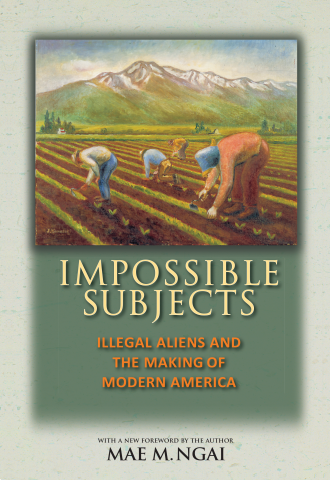
It’s been a long two years for Carimer Noelia Andujar, an engineering student at Rutgers University and undocumented activist.
“Sometimes, I feel completely exhausted and I’m doing everything I can and still, that doesn’t feel like it’s enough,” Andujar explains.
Andujar has good reason to feel emotionally and physically drained. In May 2016, Andujar founded UndocuRutgers, an organization advocating for undocumented students. “I felt our concerns weren’t heard or catered to,” she said.
Initially, the goal was to apply pressure on the university to meet the needs of undocumented students like herself. However, since the election of Donald J. Trump, the fight has shifted to opposing what Andujar deems as the “dehumanizing rhetoric” about undocumented peoples and immigrants of color.
Still, Andujar, who arrived to the U.S. from the Dominican Republic at four years old and grew up in New Jersey, and others like her recognize the pressing need for immigration reform. Further, they note that our discussion about immigration has to be connected to larger conversations about political and social hierarchies. Expanding the discourse reveals how immigration is tied to concepts of race, class and settler colonialism.
“If we don’t tackle these problems at their core,” Andujar explains, “They’re going to continue reinventing themselves.”
The Land of the Other
The United States has always been obsessed with maintaining a power structure dominated by whiteness. According to historian Mae Ngai, the idea of being an American was explicitly linked to being “white.” Therefore, immigration policies were constructed that made it easier for Western and Northern Europeans to come to the U.S., while restricting the number of immigrants from places like Asia.
“Immigration policy is constitutive of Americans’ understanding of national membership and citizenship,” Mae Ngai states in Impossible Subjects: Illegal Aliens and the Making of Modern America, “drawing lines of inclusion and exclusion that articulate a desired composition — imagined if not necessarily realized — of the nation.”
 Based on this idea that only white people are American, whites have consistently terrorized those they’ve viewed as “perpetual foreigners,” such as Asian migrants and even Mexican-Americans who’ve lived in North America for generations. Even after the immigration system was liberalized in the 1960s, white Americans continue to perceive non-white groups as foreign, as in the case of Vincent Chin, who was an Asian-American beaten to death by white men, who believed he was a foreigner from Japan.
Based on this idea that only white people are American, whites have consistently terrorized those they’ve viewed as “perpetual foreigners,” such as Asian migrants and even Mexican-Americans who’ve lived in North America for generations. Even after the immigration system was liberalized in the 1960s, white Americans continue to perceive non-white groups as foreign, as in the case of Vincent Chin, who was an Asian-American beaten to death by white men, who believed he was a foreigner from Japan.
Kishwer Vikaas is a public interest immigration lawyer practicing at McGeorge School of Law’s Community Legal Services in California. The clinic provides free legal services to low-income families.
“White America has never embraced the immigrant of color,” Vikaas stated. Vikaas is aware of the heightened xenophobia of the Trump administration but connects the current toxic discourse about immigration to policies that have been developed over several administrations.
“While there has been a laser-sharp focus on immigration in the media the last two years, the previous administration was no less complicit in targeting immigrants,” Vikaas explained, “I think people forget that President Barack Obama was nicknamed the ‘Deporter in Chief.’ More than 2 million people were deported during his terms — more than under any president. And President Bill Clinton’s 1996 immigration ‘reform’ bill essentially created the deportation machine as we know it today. Thinking an election would change the way politicians frame immigration reform is a fatal mistake.”
Contrary to the narrative of America as welcoming to immigrants, a frame that even Democrats and their allies utilize in debates and speeches, the U.S.’s political system has actively sown animus against immigrants and has promoted a concept of immigrants of color and their descendants as outsiders. Most importantly, this false narrative denies the reality that land was stolen from indigenous peoples and that the country’s economic foundations were created by the blood, sweat and tears of enslaved Africans.
Ultimately, these struggles for immigrant rights and the rights of black and brown peoples are connected and reveal the overarching goal of the U.S. political system: to oppress all people of color, whether native-born or a recent immigrant. Although it’s harder now for most politicians to explicitly express this, they do so by concealing their prejudice with rhetoric, such as ending “chain migration” (a.k.a. family reunification) or claiming that Affirmative Action policies should be “color-blind.”
“By using code words, they’re trying to conceal how these policies will end up hurting disproportionately people of color,” Andujar said.
Immigrants & Privilege
Missing from our discourse about immigration has also been the influence of class.
Cathy Dang is the Executive Director at CAAAV Organizing Asian Communities, an organization founded by progressive working-class Asian American women in New York City over thirty years ago. CAAAV organizes working class Chinese, Bangladeshi and Korean immigrants in the city around issues like housing.
Dang cited the sharp differences in how their constituencies are treated and heard compared to wealthier Asian immigrants. For instance, there have been examples of wealthier Chinese immigrants, despite their lack of voting rights, who have been able to find powerful allies in advocating for a conservative political agenda, such as ending “sanctuary cities.” Similarly, there have been Indian immigrants in white-collar professions willing to advocate for Trump policies that would only help them at the expense of others, including South Asian Americans who are undocumented and poorer.
https://twitter.com/estherxlwang/status/918871439192743936
"There is no win for the South Asian community if a select group of Indian-Americans become complicit with the Trump agenda and wins green cards for a select few." – @dalitdiva @Rewire_News https://t.co/gF825RV1B2
— The Aerogram (@theaerogram) February 16, 2018
Only by confronting issues of class can working class immigrants recognize that their interests are important and separate from their middle to upper-middle income counterparts.
“The working-class folks can get pulled into these conservative movements,” Dang said, “However, if we are able to incorporate them into a framework of thinking about a working-class struggle, we will be able to have a stronger force against the conservatives.”
Friends & Families
Finally, it is vital to never forget the humanity of immigrants of color when immigration policies are discussed.
“Some folks talk about the economic argument for reform,” Vikaas said, “How it affects our economy — how immigrants are essential to our industries. The billions we will lose. I think it is a moral question. Can we as Americans live with ourselves knowing families are being torn apart right in front of us? Teenagers are being sent back to countries where they are forced to join gangs or die? We cannot let this happen.”
The past few years has forced Andujar to recognize that her emotional and physical health has to be a priority.
“I’m realizing my own limits,” she said.
Andujar remains an activist but has stepped down as president of UndocuRutgers to focus more of her attention on her classes and finding time to spend with family and friends.
Andujar encourages other undocumented students to do the same.
“You need to make sure you’re taking care of yourself,” she said, “It’s okay to enjoy what you can and live life.”
***
Sudip Bhattacharya is a Rutgers University Ph.D. student in political science who focuses on race and social justice. He has a Master’s in journalism from Georgetown University. His work has been published at CNN, The Washington City Paper, The Lancaster Newspapers, The Daily Gazette (Schenectady), The Jersey Journal, Media Diversified (Writers of Colour), Reappropriate, AsAm News, The New Engagement, and Gaali Gang.












